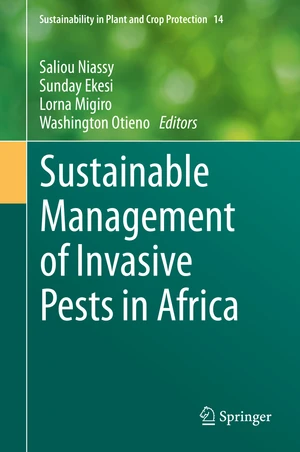Invasive species, generally, affect economically important crops, thus affecting the livelihoods of millions of people along crop value chains. Typically, invasive species have high migratory capabilities and, because of plant material exchanges made during trade, they cannot be contained by one country. Usually, African countries react after a pest has invaded and established itself in the country, making the cost of mitigating the pest even more expensive. This book presents a pan-African view of the impacts of invasive insect pests on agriculture and of how invasive species impact on productivity in Africa. It not only describes their importance, but also presents a diversity of research findings in the field, ranging from the use of early warning and monitoring systems for quarantine purposes, agricultural extension, all the way to control strategies. The IPM arsenal presented in this book includes the use of botanical bioactive compounds, semiochemicals, resistant varieties, biological control agents such as entomopathogens, endophytes, predators, and natural enemies. Aspects of technology transfer strategies, regional coordination, and farmersâ perceptions have not been overlooked, because these affect the adoption of mitigation strategies. The book also presents measures that would help agricultural research services to estimate the damage and take actions for preparedness and readiness to face invasive insect pests. This starts with a basic knowledge of taxonomy to enable concerned persons to describe the insects and the vast inventory of affected crops. Physiological and ecological aspects of invasive pests are strongly highlighted to strengthen Integrated Pest Management Strategies. The threat of invasive species will remain permanent; therefore, the book encourages knowledge exchange and collaboration between researchers and scientists on the continent, while encouraging the establishment of a platform or a fund for preparedness and rapid response.
Price history
Apr 2, 2022
€162.86

